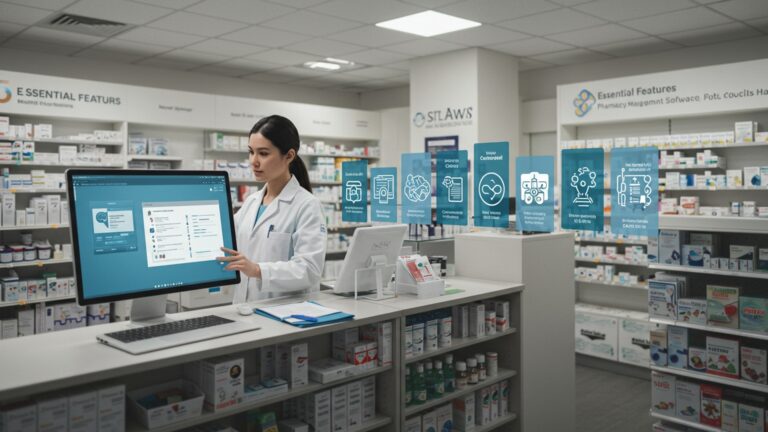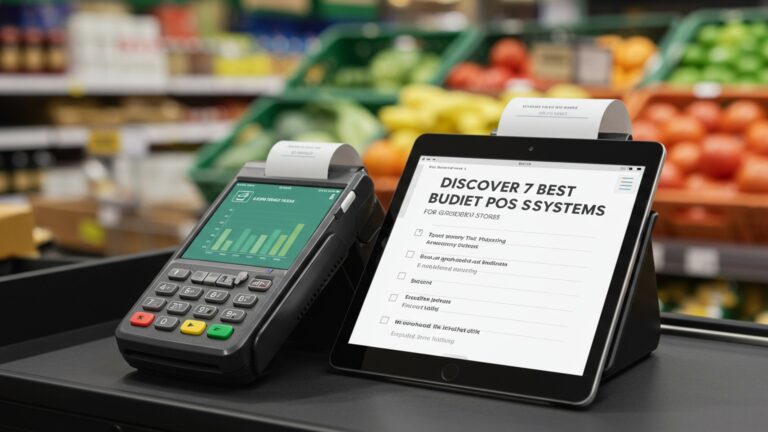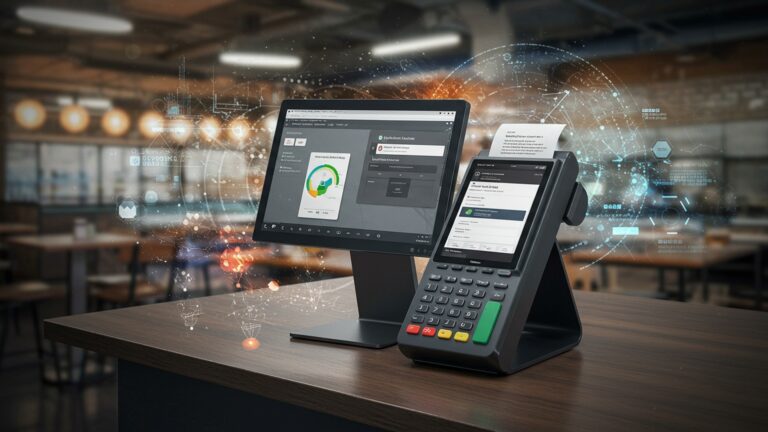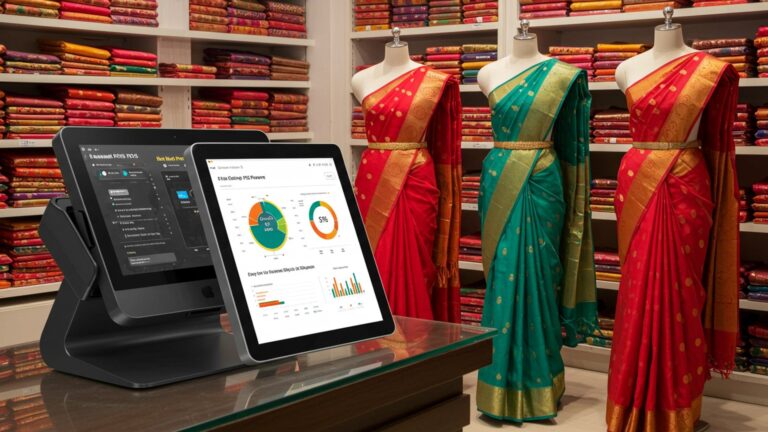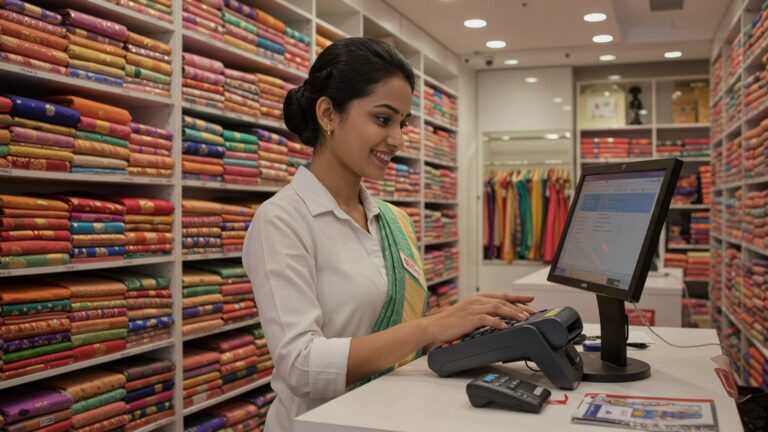How to Choose the Best Kirana Billing Software 7 Essential Tips
The modern kirana store navigates a dynamic retail environment where efficiency and accuracy are paramount. Manual systems are rapidly giving way to advanced kirana billing software POS solutions, which are no longer mere transaction processors but strategic tools for growth. With recent trends emphasizing seamless UPI integrations, cloud-based inventory management. robust GST compliance, selecting the optimal software demands a keen eye beyond just basic billing. A truly effective system empowers owners with real-time sales analytics, automates stock replenishment. enhances the customer experience through integrated loyalty programs, fundamentally transforming daily operations into a competitive advantage. This strategic choice directly impacts profitability and long-term sustainability in a rapidly evolving market.
Written by PromotoAI
promotoai generate content that ranks
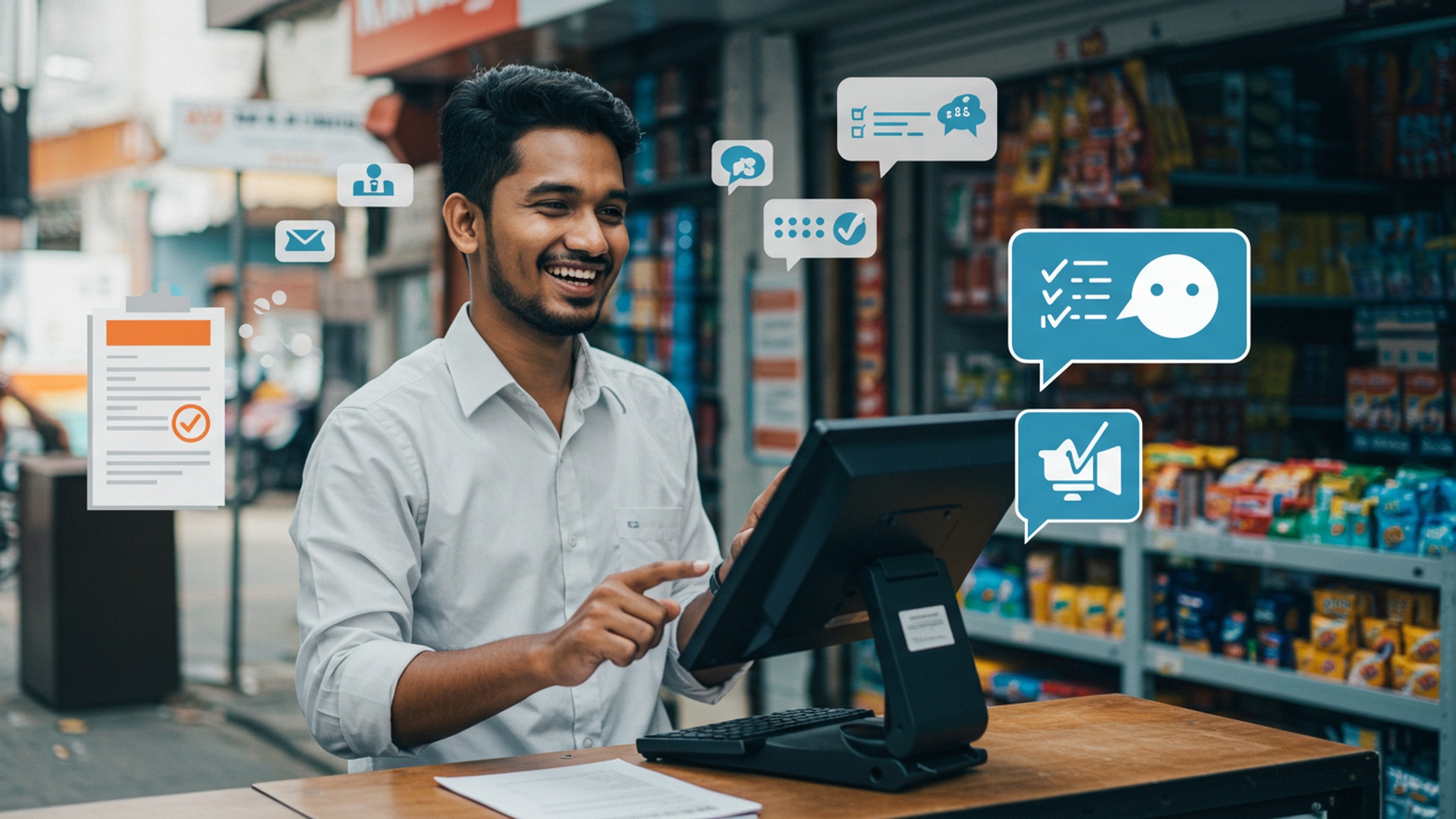
Understanding Kirana Billing Software and POS Systems
Running a successful kirana store, the heart of local commerce in many communities, demands efficiency and precision. In today’s fast-paced retail environment, manual billing and inventory management are not just time-consuming but also prone to errors. This is where modern technology steps in, revolutionizing operations with dedicated software solutions. Understanding the core components of these systems is the first step towards choosing the best fit for your business.
What is a Kirana Store?
A kirana store is a traditional Indian neighborhood grocery or convenience store. These stores are vital for daily essentials, often operating on credit systems, personalized customer service. a diverse range of products from food grains to household items. Their unique operational dynamics require specialized tools to manage sales, inventory. customer relationships effectively.
What is Billing Software?
At its simplest, billing software is a digital tool designed to automate the process of generating invoices, managing sales transactions. tracking payments. For a kirana store, this means quickly creating bills for customers, calculating totals, applying discounts. recording sales data digitally, eliminating the need for paper ledgers and manual calculations.
What is a POS (Point of Sale) System?
A POS (Point of Sale) system is much more comprehensive than basic billing software. It’s the central hub where all sales transactions are processed. A modern kirana billing software POS system integrates various functionalities beyond just billing, including inventory management, customer relationship management (CRM), employee management. detailed reporting. When a customer makes a purchase, the “point of sale” is where the transaction is completed – whether that’s at a physical counter with a cash register, a computer, or even a mobile device. The software records the sale, updates inventory. often processes payments, making it an indispensable tool for efficient retail operations.
Why Your Kirana Store Needs a POS Billing Software
- Increased Efficiency: Automates billing, inventory updates. reporting, saving valuable time.
- Reduced Errors: Minimizes human errors in calculations, stock counts. pricing.
- Better Inventory Control: Tracks stock levels in real-time, helping prevent stockouts and overstocking.
- Enhanced Customer Experience: Faster checkouts, loyalty programs. personalized service.
- Improved Decision Making: Provides valuable data through reports on sales trends, popular products. customer behavior.
- GST and Tax Compliance: Simplifies tax calculations and report generation for regulatory compliance.
Tip 1: Assess Your Store’s Specific Needs
Before diving into the features of various software, take a step back and thoroughly evaluate your kirana store’s unique operational requirements. A one-size-fits-all approach rarely works, especially in the diverse landscape of kirana businesses. Understanding your specific needs will narrow down your options and ensure you invest in a solution that truly serves your business.
- Inventory Size and Diversity: Do you stock hundreds or thousands of SKUs? Do you deal with fresh produce, packaged goods, or a mix? Some software excels at managing large, varied inventories, while others are simpler. Consider if you need features for tracking expiry dates, batch numbers, or different units of measurement (e. g. , by weight, by piece).
- Number of Daily Transactions: A small neighborhood store with 50 transactions a day has different needs than a busier outlet handling hundreds. High-volume stores require robust systems that can process transactions quickly without lag, ensuring smooth customer flow.
- Staff Management: How many employees do you have? Do you need to track their sales performance, manage shifts, or assign specific permissions within the software? Some systems offer built-in employee management tools, while others are more basic.
- Customer Engagement: Do you run a customer loyalty program? Do you offer credit to regular customers? If so, you’ll need a kirana billing software POS that can manage customer accounts, track purchases, apply discounts. handle credit transactions seamlessly. For example, a store owner in rural Maharashtra might offer credit to a long-time customer. the software should easily record and track these dues.
- Budget Constraints: Be realistic about what you can afford, not just for the software itself. also for hardware (if needed), training. ongoing support.
A practical approach is to list out your current pain points and desired improvements. For instance, if tracking credit sales is a major headache, prioritize software with strong credit management features. If inventory counts are always off, focus on robust inventory modules.
Tip 2: Look for Robust Inventory Management Features
For any retail business, especially a kirana store with its vast array of products, inventory is king. Effective inventory management is critical to profitability, preventing both lost sales due to stockouts and capital tied up in excess stock. The best kirana billing software POS will offer comprehensive tools to keep your shelves optimally stocked.
- Real-time Stock Tracking: This is non-negotiable. The software should automatically update stock levels every time a sale is made or new inventory is received. This prevents you from selling items you don’t have and helps you know exactly what’s on hand at any moment.
- Batch Management and Expiry Dates: Many kirana products (groceries, medicines, dairy) have expiry dates. Your software should allow you to track inventory by batch and alert you to items nearing their expiration, enabling you to move them through promotions or return them to suppliers, reducing waste. Imagine a scenario where a shopkeeper needs to quickly identify all milk packets expiring in the next two days; the right software makes this effortless.
- Automated Reordering and Low Stock Alerts: Configure minimum stock levels for your fast-moving items. When stock falls below this threshold, the software should automatically generate reorder suggestions or send alerts. This proactive approach saves time and ensures you never run out of popular products.
- Supplier Management: The ability to link inventory to specific suppliers, track purchase orders. manage vendor payments directly within the system simplifies procurement.
- Multi-location Support (if applicable): If you operate more than one kirana store, the software should ideally allow you to manage inventory across all locations from a single dashboard, providing a consolidated view of your entire stock.
- Barcode Scanning Integration: Essential for quick and accurate stock receiving and billing. The software should seamlessly integrate with barcode scanners.
A good example is a kirana store using the software to track rice and pulses. When a customer buys 5kg of Basmati rice, the system instantly deducts that from the inventory. If the stock level drops below 50kg, an automated alert prompts the owner to place a new order with the supplier, preventing a stockout during peak season.
Tip 3: Prioritize Ease of Use and User Interface (UI)
A powerful kirana billing software POS is only effective if your staff can use it efficiently. The user interface (UI) and overall ease of use are paramount, especially in a retail environment where speed and accuracy at the counter are crucial. A complex system, no matter how feature-rich, can lead to frustration, errors. slow service.
- Intuitive Design: The software should have a clean, uncluttered interface that is easy to navigate. Common tasks like billing, searching for products, or applying discounts should be accessible with minimal clicks. A well-designed UI often mimics real-world processes, making it naturally understandable.
- Minimal Training Requirements: Your staff, who may have varying levels of technological proficiency, should be able to learn the basics quickly. Look for systems that offer clear visual cues and straightforward workflows. A good test is to see if a new employee can perform basic billing tasks after a short demonstration.
- Speed of Operation: During peak hours, every second counts. The software should respond quickly to inputs, process transactions without delay. not freeze or crash. Slow software can lead to long queues and customer dissatisfaction.
- Customizable Hotkeys/Shortcuts: For frequently sold items or common actions, the ability to assign hotkeys can significantly speed up the billing process. This is particularly useful for small items like candies or common daily necessities.
- Touchscreen Compatibility: Many modern POS systems are designed for touchscreens, which can be faster and more intuitive than keyboard-and-mouse operations for counter staff.
- Error Prevention: Features like confirmation prompts for large discounts or clear error messages can help prevent costly mistakes during transactions.
Consider a scenario where a new staff member is handling a rush hour. If the software is intuitive, they can quickly find items, apply discounts. complete transactions without holding up the line. Conversely, a confusing interface can lead to delays, errors. a poor customer experience. Prioritize a system that feels natural and efficient to operate.
Tip 4: Evaluate Reporting and Analytics Capabilities
Data is the new gold. for a kirana store, understanding your sales patterns, inventory movements. customer behavior can unlock significant growth. A top-tier kirana billing software POS goes beyond just recording transactions; it transforms raw data into actionable insights through comprehensive reporting and analytics.
- Sales Reports: These are fundamental. Look for reports that detail daily, weekly, monthly. yearly sales, broken down by product, category, payment method. even by employee. This helps you identify best-selling products, slow movers. peak sales periods. For example, knowing that ‘chai patti’ sales surge on weekends allows you to stock up accordingly.
- Profit and Loss Statements: interpret your store’s financial health. The software should generate basic P&L reports, helping you track revenue against costs, giving you a clear picture of your profitability.
- Inventory Reports: Beyond basic stock levels, look for reports on inventory turnover, dead stock. items nearing expiry. This helps optimize purchasing and reduce waste.
- Customer Data Analysis: If your software has CRM capabilities, it should offer insights into customer purchasing habits, average transaction values. loyalty program effectiveness. This data is invaluable for targeted marketing and personalized offers.
- GST/Tax Compliance Reports: In India, GST compliance is critical. The software should be capable of generating accurate GST reports (e. g. , GSTR-1, GSTR-3B) with minimal effort, simplifying your tax filings and ensuring regulatory adherence. This is a significant time-saver and reduces the risk of penalties.
- Customizable Reports: The ability to tailor reports to your specific needs, or export data in various formats (e. g. , Excel, PDF) for further analysis, adds significant value.
A real-world application: A kirana store owner notices from their sales reports that a particular brand of biscuits sells exceptionally well on Tuesdays and Fridays. They can then ensure those biscuits are prominently displayed and well-stocked on those days, potentially increasing impulse buys. Conversely, if a product consistently shows up as a “slow mover,” the owner can decide to discount it or stop stocking it to free up shelf space and capital.
Tip 5: Check for Essential Integrations
A modern kirana billing software POS rarely operates in isolation. Its true power often lies in its ability to seamlessly integrate with other crucial business tools and hardware. These integrations streamline operations, eliminate manual data entry. create a more cohesive business ecosystem.
- Payment Gateway Integration: In today’s digital economy, customers expect diverse payment options. Your software must integrate with popular payment gateways for debit/credit cards, UPI (e. g. , PhonePe, Google Pay, Paytm). mobile wallets. This ensures smooth, secure. fast transactions at the counter.
- Accounting Software: Manual reconciliation of daily sales with your accounting books is a tedious and error-prone task. Integration with popular accounting software (e. g. , Tally, QuickBooks) allows sales data, expenses. other financial insights to flow automatically, simplifying bookkeeping and ensuring financial accuracy.
- E-commerce Platforms (if applicable): If your kirana store plans to expand online or already has a presence on platforms like ONDC or local delivery apps, integration with these platforms is crucial. This ensures that online sales automatically update your in-store inventory and vice-versa, preventing overselling and ensuring consistent stock levels across all channels.
- Hardware Compatibility: The software must be compatible with essential POS hardware, including:
- Barcode Scanners: For quick product identification and billing.
- Receipt Printers: To provide customers with physical receipts.
- Cash Drawers: For secure cash management.
- Customer-Facing Displays: To show transaction details to customers during checkout.
- Weighing Scales: Especially vital for kirana stores selling loose grains, fruits. vegetables by weight. The software should ideally be able to interface directly with the scale for accurate billing.
- Third-party Apps: Some businesses might use specific apps for staff scheduling, marketing, or delivery management. Check if the software offers APIs (Application Programming Interfaces) or direct integrations to connect with these tools.
An example: A kirana store owner integrates their billing software with their UPI payment gateway. When a customer pays via QR code, the transaction is instantly recorded in the POS system. the payment is reconciled, eliminating the need for manual verification and reducing transaction time. This seamless flow of details is key to modern retail efficiency.
Tip 6: Consider Scalability and Future-Proofing
Your kirana store today might be a small operation. with the right strategies, it could grow significantly. Choosing a kirana billing software POS that can scale with your business is a critical long-term decision. Investing in a system that can adapt to future needs prevents the costly and disruptive process of switching software down the line.
- Growth Potential: Consider if the software can handle an increase in product SKUs, transaction volume, or additional store locations without a complete overhaul. Does it offer multi-store management features that you might need in the future?
- Cloud-based vs. On-premise Solutions: This is a major decision impacting scalability.
Feature Cloud-based POS On-premise POS Accessibility Access from anywhere with internet, on any device. Ideal for remote management. Limited to the physical location where the software is installed. Maintenance & Updates Managed by the vendor. Automatic updates, minimal IT hassle. Requires local IT maintenance, manual updates, potential downtimes. Cost Structure Subscription-based (SaaS). Lower upfront cost, predictable monthly expenses. Higher upfront cost (license, hardware), potential ongoing maintenance fees. Data Security Vendor responsible for security, often with robust backup and encryption. Your responsibility. Requires local backup solutions and security measures. Scalability Easier to scale up or down as business needs change. Scaling often requires significant hardware upgrades and license changes. For most kirana stores, especially those looking for flexibility and lower upfront costs, a cloud-based solution is often the more future-proof choice. It allows you to manage your store even when you’re not physically present, which can be invaluable for busy owners.
- API Availability: An API (Application Programming Interface) allows different software systems to “talk” to each other. If a POS offers robust APIs, it means you can potentially integrate it with custom tools or new third-party services that emerge in the future, without being restricted by the vendor’s pre-built integrations.
// Example of an API call concept GET /api/v1/products/{product_id}This snippet illustrates how an external system might request product details from the POS via its API.
- Data Export Options: Ensure the software allows you to easily export your data (sales, inventory, customer details) in common formats (CSV, Excel). This is crucial for data migration if you ever decide to switch providers, ensuring you’re not locked into a single ecosystem.
A kirana store that started with a single outlet might eventually want to open a second branch. A scalable cloud-based kirana billing software POS would allow them to add the new location to the same system, manage inventory and sales centrally. access consolidated reports without purchasing entirely new software or undergoing complex migrations.
Tip 7: Examine Vendor Support and Pricing Model
The best software is only as good as the support behind it. Technical issues, training needs, or questions about features are bound to arise. reliable vendor support can make all the difference. Equally vital is understanding the pricing structure to ensure it aligns with your budget and offers long-term value.
- Technical Support:
- Availability: Does the vendor offer 24/7 support, or are their hours limited? For a kirana store that operates long hours, immediate support can be crucial if a system goes down during peak business.
- Channels: Can you reach them via phone, email, live chat, or a ticketing system? Multiple options are preferable.
- Responsiveness: Look for reviews or ask for testimonials regarding their response times and effectiveness in resolving issues.
- On-site vs. Remote: Some vendors offer local on-site support, which can be beneficial for hardware-related issues, while others rely solely on remote assistance.
- Training and Onboarding:
- Does the vendor provide initial training for you and your staff?
- Are there comprehensive user manuals, video tutorials, or online knowledge bases available?
- Good onboarding ensures that you maximize the software’s potential from day one.
- Pricing Structures: This can vary significantly, so comprehend all costs involved.
Pricing Model Description Pros for Kirana Store Cons for Kirana Store Subscription (SaaS) Monthly or annual fee for software usage, often cloud-based. Lower upfront cost, automatic updates, accessible from anywhere. Ongoing recurring cost, dependent on internet connectivity. One-time Purchase (Perpetual License) Pay a single, larger fee upfront for the software license. Often on-premise. No recurring software fees, complete ownership. Higher initial investment, may require separate payments for updates/support. Hybrid Model One-time purchase for core software, with optional subscription for premium features or support. Flexibility, balance of ownership and ongoing service. Can be complex to interpret all associated costs. Be aware of hidden costs like fees for additional users, modules, integrations, or data storage. Always ask for a detailed breakdown of all potential expenses.
- Free Trials and Demos: Most reputable vendors offer a free trial period or a live demo. This is an invaluable opportunity to test the software’s features, ease of use. compatibility with your existing hardware before making a commitment. Always take advantage of these opportunities.
Imagine a kirana store owner facing a critical issue with their kirana billing software POS during their busiest evening hours – perhaps the billing system is slow, or a payment integration isn’t working. If the vendor offers 24/7 phone support, the issue can be resolved quickly, minimizing disruption and lost sales. Without such support, the owner might face significant losses and customer frustration.
Written by PromotoAI
promotoai generate content that ranks
Conclusion
Choosing the right Kirana billing software isn’t just about ticking boxes; it’s about empowering your business for the future. Remember, the ideal solution should simplify your daily operations, from managing inventory of fast-moving consumer goods to ensuring seamless GST compliance. My personal tip is to always prioritize a user-friendly interface and robust customer support, as these aspects dramatically reduce the learning curve and potential downtime, especially during peak hours like the pre-festival rush. Ultimately, a well-chosen software, perhaps one that offers cloud-based real-time stock updates, can transform your Kirana store. It prevents frustrating stockouts of popular items like essential pulses or spices and streamlines billing, allowing you to focus more on customer engagement. Don’t view this as an expense. rather a strategic investment in efficiency and growth. Take that decisive step, embrace the right technology. watch your Kirana store thrive in today’s competitive landscape.
More Articles
Discover the Top 7 POS Software for Grocery Stores in India
Learn How 10 Mobile POS Billing Apps Can Boost Grocery Efficiency
Choose Wisely 10 Best POS Software for Your Grocery Store in India
5 Essential Features Your POS Billing Software Needs for GST Compliance
7 Best POS Software Options to Boost Your Business Efficiency
Written by PromotoAI
promotoai generate content that ranks
FAQs
I’m not very tech-savvy. How essential is it for the software to be easy to use?
It’s super essential! Look for software with a clean, intuitive interface that your staff can learn quickly without extensive training. The easier it is to navigate, the faster you can process sales and manage your inventory, saving you time and reducing errors.
What are the absolute must-have features I should look for in Kirana billing software?
At a minimum, you’ll want robust billing and invoicing, comprehensive inventory management (tracking stock, expiry dates, reorder points), basic sales reporting. customer management for loyalty programs. Some good-to-haves include vendor management and expense tracking.
How much should I expect to pay. are there hidden costs?
Pricing varies, usually based on features and user count. You’ll find one-time purchase options or subscription models (monthly/annually). Always ask about hidden costs like setup fees, training charges, or ongoing support fees. A transparent pricing structure is key.
What kind of customer support is best for a small Kirana store?
For a Kirana store, reliable and responsive support is crucial. Look for providers who offer multiple channels (phone, chat, email) and have a good reputation for quick issue resolution. Local support can also be a big plus for on-site assistance if needed.
My store might grow in the future. Can the software keep up?
Definitely consider scalability. Choose software that can handle an increasing number of products, customers. transactions. If you plan to open more branches, ensure it supports multi-store management. You don’t want to switch systems again in a few years.
Is my customer and sales data safe with these billing systems?
Data security is paramount. Check if the software uses encryption for data protection, offers regular backups. has robust privacy policies. If it’s cloud-based, inquire about their server security measures. Your business data is a valuable asset, so it needs to be well-protected.
Should I try the software before buying it?
Absolutely! Most reputable software providers offer free trials or demos. This is your chance to test out the features, see if it’s user-friendly. ensure it meets your specific store’s needs. Don’t commit until you’ve had a hands-on experience.

